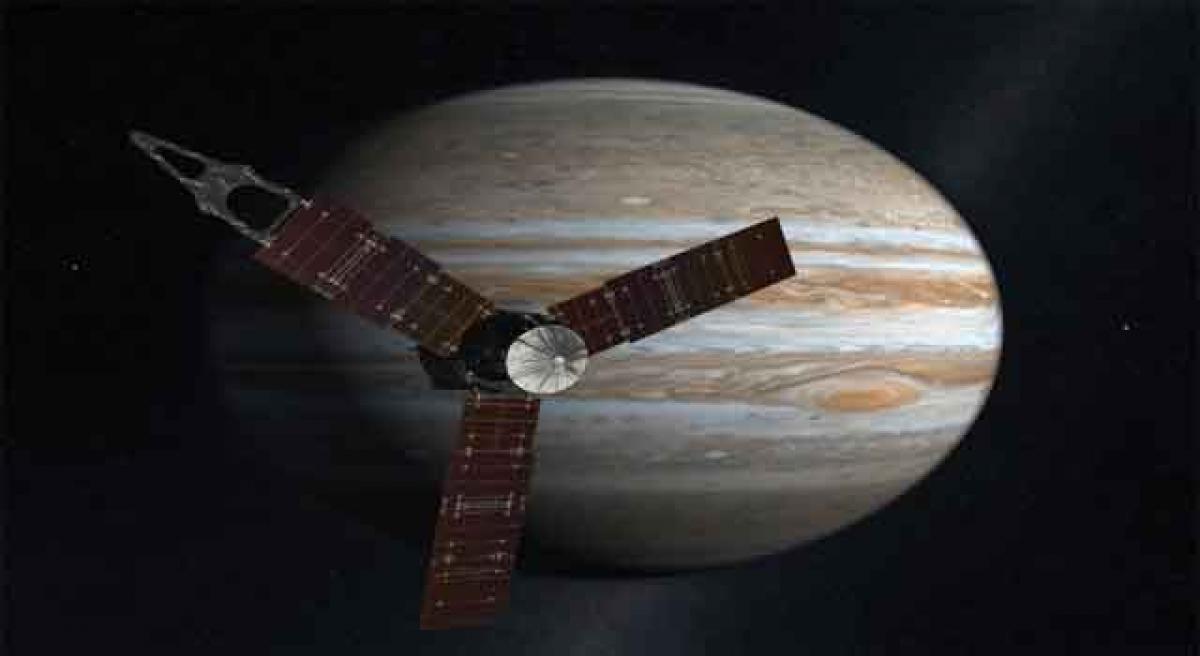Juno set for date with Jupiter, NASA scientists ready

Get ready for the biggest space event of the year as NASA\'s solar-powered Juno spacecraft will end its nearly five-year journey to arrive at Jupiter on Tuesday to study the gas giant like never before.
Washington: Get ready for the biggest space event of the year as NASA's solar-powered Juno spacecraft will end its nearly five-year journey to arrive at Jupiter on Tuesday to study the gas giant like never before.
Once in Jupiter's orbit, the 1,600 kg spacecraft will circle the Jovian world 37 times during 20 months, skimming to within 5,000 km above the cloud tops.
This is the first time a spacecraft will orbit the poles of Jupiter, providing new answers to ongoing mysteries about the planet's core, composition and magnetic fields.
On July 4, at 11.18 p.m. on Monday (8.48 am on Tuesday India time), Juno will fire its main engine, beginning a 35-minute burn that will place it into orbit around Jupiter.
NASA only has one chance at this. If something goes wrong, the mission will shoot past Jupiter into deep space with no hope for return.
"We are ready. The science team is incredibly excited to be arriving at Jupiter. The engineers and mission controllers are performing at an Olympic level getting Juno successfully into orbit," said Scott Bolton, principal investigator of Juno from the Southwest Research Institute in San Antonio.
"As Juno barrels down on Jupiter, the scientists are busy looking at the amazing approach science the spacecraft has already returned to Earth. Jupiter is spectacular from afar and will be absolutely breathtaking from close up," he added in a NASA statement.
During the flybys, Juno will probe beneath the obscuring cloud cover of Jupiter and study its auroras to learn more about the planet's origins, structure, atmosphere and magnetosphere.
Juno's name comes from Greek and Roman mythology. The mythical god Jupiter drew a veil of clouds around himself to hide his mischief, and his wife -- the goddess Juno -- was able to peer through the clouds and reveal Jupiter's true nature.
The four largest moons of Jupiter are named the Galilean moons because they were discovered by Galileo Galilei in 1609.
Source: IANS




















